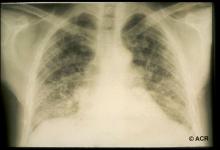A $20 Drug Company Meal Yields 2-5 Times More Prescriptions Save

Accepting a single pharmaceutical industry-sponsored meal was associated with higher rates of prescribing certain drugs to Medicare patients by physicians, with more, and costlier, meals associated with greater increases in prescribing, according to an article published online by JAMA Internal Medicine.
Some argue industry-sponsored meals and payments help facilitate the discussion of novel treatments but others have raised concerns about the potential to influence prescribing patterns. Previous studies have suggested physician-industry relationships were associated with increased prescribing of brand-name drugs.
R. Adams Dudley, M.D., M.B.A., of the University of California, San Francisco, and coauthors linked two national data sets to quantify the association between industry payments and physician prescribing patterns.
Authors identified the most-prescribed brand-name drugs in each of four categories in Medicare Part D in 2013. The target drugs were rosuvastatin calcium among statins, nebivolol among cardioselective β-blockers, olmesartan medoxomil among angiotensin receptor blockers (ACE inhibitors and ARBs), and desvenlafaxine succinate among selective serotonin and serotonin-norepinephrine reuptake inhibitors (SSRIs and SNRIs). The 2013 Open Payments database describes the value and the drug or device promoted for payments to physicians for five months in 2013 as reported by pharmaceutical companies.
Authors report 279,669 physicians received 63,524 payments associated with the four target drugs, with 95 percent of those payments being meals that had an average value of less than $20. Rosuvastatin accounted for 8.8 percent of statin prescriptions; nebivolol represented 3.3 percent of cardioselective β-blocker prescriptions; olmesartan represented 1.6 percent of ACE inhibitor and ARB prescriptions; and desvenlafaxine represented 0.6 percent of SSRI and SNRI prescriptions.
Physicians who received meals related to the targeted drugs on four or more days prescribed rosuvastatin at 1.8 times the rate of physicians receiving no target meals, nebivolol at 5.4 times the rate, olmesartan at 4.5 times the rate, and desvenlafaxine at 3.4 times the rate, according to the results.
Physicians who received only a single meal promoting the four target drugs also had higher rates of prescribing those medications, the results suggest. Additional meals and costlier meals were associated with higher prescribing rates.
Higher proportions of the physicians who received industry payments were men, solo practitioners, and physicians who practiced in the South, the authors report.
The authors note their results are cross-sectional and reflect an association, not a cause-and-effect relationship. For example, if physicians choose to attend industry events where information is provided about drugs they already prefer then meals may have no effect on their prescribing patterns.
“Our findings support the importance of ongoing transparency efforts in the United States and Europe,” the study concludes.







If you are a health practitioner, you may Login/Register to comment.
Due to the nature of these comment forums, only health practitioners are allowed to comment at this time.